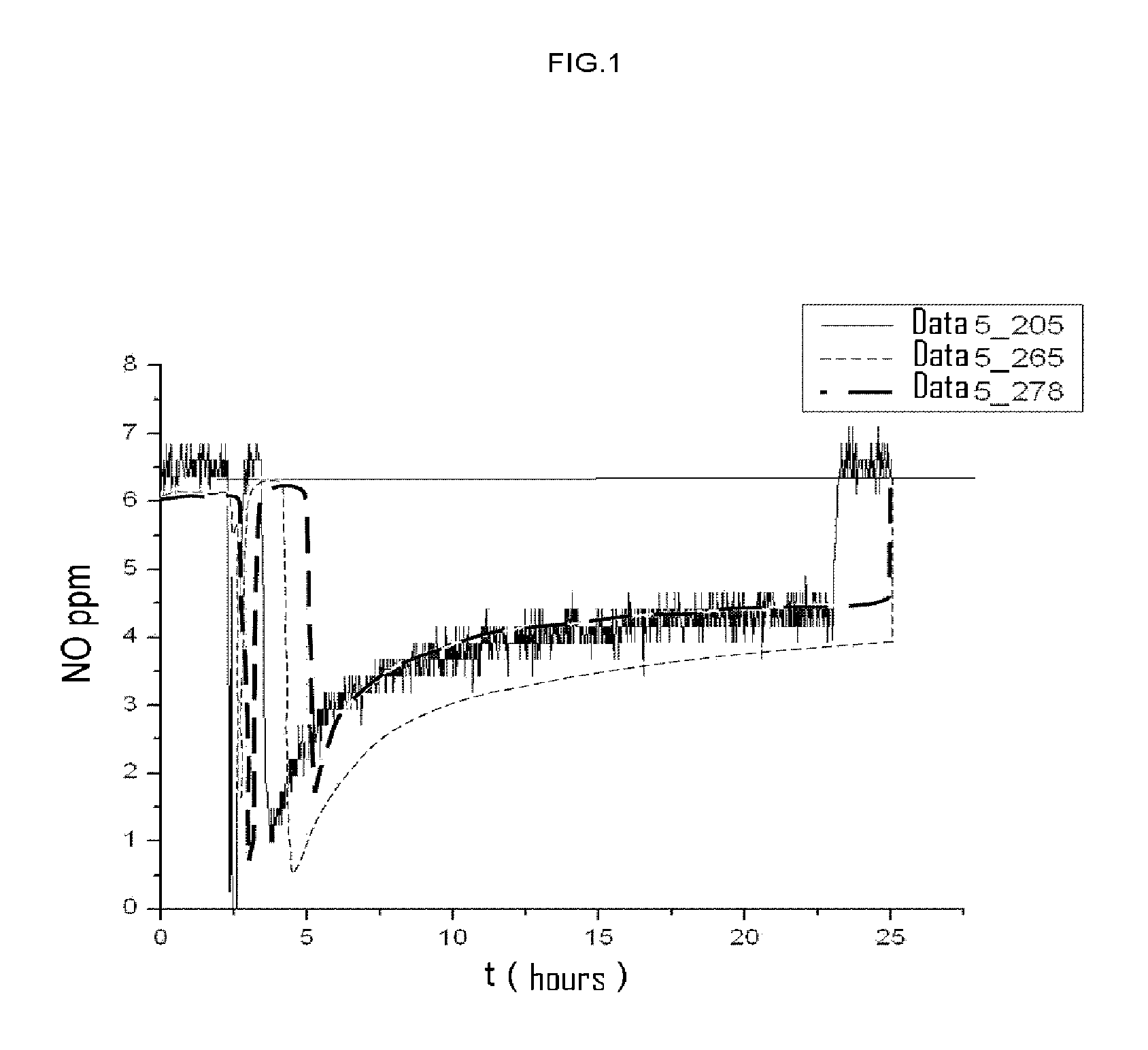Ceramic glaze composition
a ceramic glaze and composition technology, applied in the field of ceramic glazes, can solve the problems of pollution problems currently existing in large cities, negative environmental impact on the planet, and variety of problems in population health
- Summary
- Abstract
- Description
- Claims
- Application Information
AI Technical Summary
Benefits of technology
Problems solved by technology
Method used
Image
Examples
example 1
Composition 278BCB1
[0038]In this first example there was used a ceramic glaze with the following composition: a solid preparation comprising 84% by weight solid of the product, whose composition and preparation method are claimed in the Spanish patent application No. 200900188, 1% by weight solid of sodium tripolyphosphate and 15% by weight solid of a fluxing additive, with the composition of said additive being as follows: 55% of lead oxide PbO, 22% of silicon dioxide SiO2, 7% of Zinc oxide ZnO, 7% of sodium oxide Na2O, 5% of titanium oxide TiO2 and 4% of dialuminum trioxide Al2O3. Said solid composition was mixed and homogenized with the silk-screen carrier in a rate of 50% by weight of the total mixture, said silk-screen carrier being in turn composed of 85% of a polyglycol, 10% of water and 5% of polysaccharide-type resin. The resulting mixture showed a rejection of 0% in a 45 micron sieve and the resulting glaze was conditioned at a density of 1.68 kg / l. The referred photocat...
example 2
Composition 205SBB1
[0039]In this example there was used a ceramic glaze with the following composition: a solid preparation comprising 60% by weight solid of the product, whose composition and preparation method are claimed in the Spanish patent application No. 200900188, 5% by weight solid of sodium tripolyphosphate and 35% by weight solid of a fluxing additive, with the composition of said additive being as follows: 50% of lead oxide PbO, 35% of silicon dioxide SiO2, 2% of Zinc oxide ZnO, 5% of sodium oxide Na2O, 5% of titanium oxide TiO2 and 3% of dialuminum trioxide Al2O3. Said solid composition was mixed and homogenized with the silk-screen carrier in a rate of 55% by weight of the total mixture, said silk-screen carrier being in turn composed of 80% of a polyglycol, 10% of water and 10% of polysaccharide-type resin. The resulting mixture showed a rejection of 0% in a 45 micron sieve, and the resulting glaze was conditioned at a density of 1.58 kg / l. The referred photocatalyt...
example 3
Composition 265BCB1
[0040]In this example there was used a ceramic glaze with the following composition: a solid preparation comprising 75% by weight solid of the product, whose composition and preparation method are claimed in the Spanish patent application No. 200900188, 1% by weight solid of sodium tripolyphosphate and 24% by weight solid of a fluxing additive, with the composition of said additive being as follows: 60% of lead oxide PbO, 25% of silicon dioxide SiO2, 6% of Zinc oxide ZnO, 4% of sodium oxide Na2O, 3% of titanium oxide TiO2 and 2% of dialuminum trioxide Al2O3. Said solid composition was mixed and homogenized with the silk-screen carrier in a rate of 45% by weight of the total mixture, said silk-screen carrier being in turn composed of 85% of a polyglycol, 6% of water and 9% of polysaccharide-type resin. The resulting mixture showed a rejection of 0% in a 45 micron sieve, and the resulting glaze was conditioned at a density of 1.62 kg / l. The referred photocatalytic...
PUM
| Property | Measurement | Unit |
|---|---|---|
| temperature | aaaaa | aaaaa |
| temperature | aaaaa | aaaaa |
| water absorption | aaaaa | aaaaa |
Abstract
Description
Claims
Application Information
 Login to View More
Login to View More - R&D
- Intellectual Property
- Life Sciences
- Materials
- Tech Scout
- Unparalleled Data Quality
- Higher Quality Content
- 60% Fewer Hallucinations
Browse by: Latest US Patents, China's latest patents, Technical Efficacy Thesaurus, Application Domain, Technology Topic, Popular Technical Reports.
© 2025 PatSnap. All rights reserved.Legal|Privacy policy|Modern Slavery Act Transparency Statement|Sitemap|About US| Contact US: help@patsnap.com

